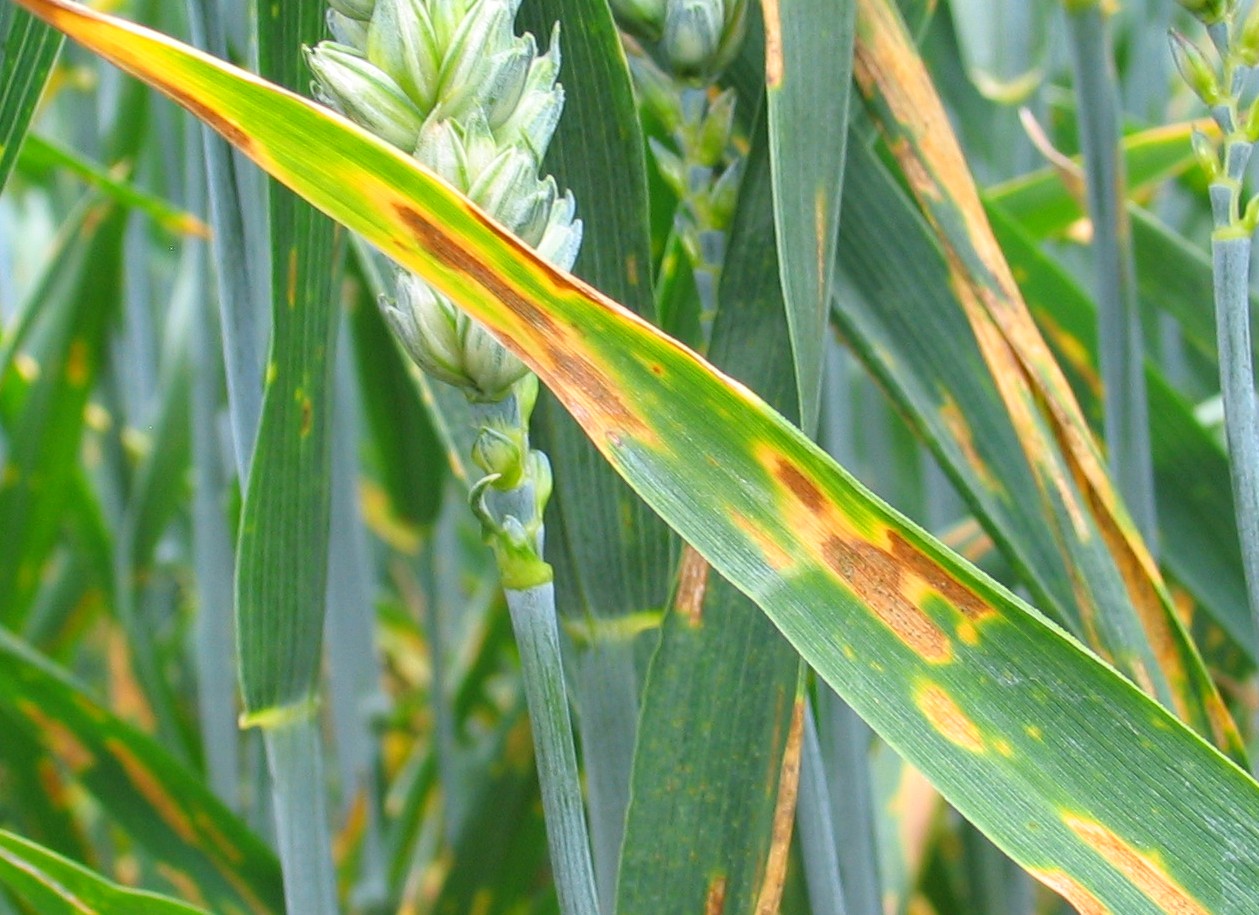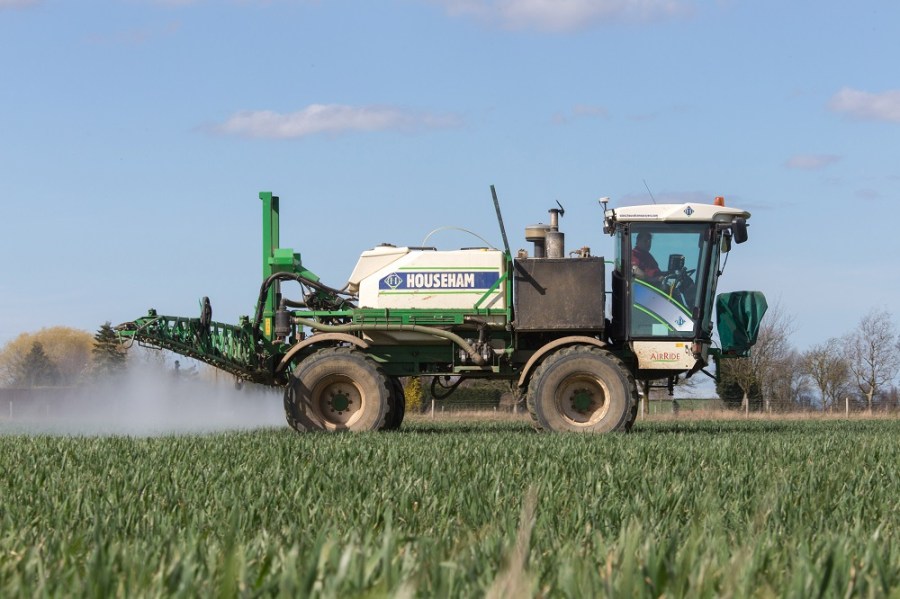Preserving the efficacy of fungicides has never been more important. CPM gets an update on the latest research underpinning the resistance management advice from Fungicide Futures.
England has caught up with Ireland as far as insensitivity to the SDHIs is concerned.
By Lucy de la Pasture
Last season wasn’t notable for high levels of disease yet there was a continued decline in sensitivity to the SDHI and azole groups of fungicides in some of the most important cereal pathogens. It’s a stark reminder that selection for fungicide resistance occurs with fungicide usage, regardless of the severity of disease symptoms, says Dr Neil Paveley, ADAS director of crop protection.
In an attempt to slow the development of fungicide resistance in the UK, AHDB and the Fungicide Resistance Action Group (FRAG-UK) set up Fungicide Futures last year, a joint initiative to highlight the resistance management advice from the industry using AHDB’s communications resources.

Neil Paveley says the monitoring highlights just how important it is to prevent highly resistant septoria trains from building up.
“The short-term goal is to maintain the activity of current chemistry, particularly the SDHIs, at a level where it’s still able to protect new fungicides, such as Revysol (azole) and Inatreq (new mode of action), when they gain registration in the UK,” he explains.
Learning how to best manage crops to minimise the selection pressure on fungicides is fundamental to developing robust anti-resistance management strategies and research is ongoing to support the messages being promoted by Fungicide Futures.
Neil is leading a project investigating strategies to manage fungicide resistance that’s evolving concurrently against two modes of action. It’s something that’s happening currently in the septoria population, where the pathogen is showing a decline in sensitivity to both the SDHIs and azoles.
The steady decline in azole efficacy continued across Europe in 2018 and appears to be associated with strains carrying the CYP51 S524T mutation which have a higher EC50 against prothioconazole and epoxiconazole, he explains.

Septoria monitoring found the frequency of the highly resistant (SDHI) mutation C-H152R was 5-10% of the population by the end of the season in 2018.
The shift in sensitivity to SDHIs is a much more recent phenomenon and field performance remains good. But data from AHDB’s fungicide performance trials shows where solo SDHI’s were used, they didn’t produce the levels of control expected from them, adds AHDB’s Dr Paul Gosling.
Monitoring at the four trials sites provided an interesting insight into the change in sensitivity to SDHIs in septoria as the season progressed.
“There’s a good geographical spread of sites, with one in Ireland (Teagasc), another in Scotland (SRUC) and two in England (NIAB and ADAS). The septoria strains present before the T0 fungicide timing were tested by Bart Fraaije’s team at Rothamsted Research and the frequency of moderately resistant strains to SDHIs was found to be 6-62% across all the sites, with Scotland having the lowest frequency and Ireland the highest.
“By the end of the season, the frequency of moderately resistant mutations had increased to 60-70% in England and 35-60% in Scotland, in the plots treated most intensively with SDHIs. The highly resistant C-H152R strain was detected at all four sites, typically at 5-10% of the population.”
The monitoring highlights just how important it is to prevent highly resistant strains from building up in the fungicide population, notes Neil. “It’s only possible to detect a septoria strain when it reaches 4-5% of the population, so the results indicate that the C-H152R strain must have been present at a low frequency in early spring but only reached detectable levels once all fungicide treatments had been applied.
“We believe C-H152R is less fit so declines over the winter, but it looks likely that its frequency in early spring has been increasing year on year as higher levels go into the winter period, so reducing selection for such strains is very important,” he highlights.
Monitoring by Rothamsted during 2018 has also detected new septoria mutations in England at very low frequencies, two of which (B-H267L and C-N86k) are highly insensitive to SDHIs. There’s still a question mark over their fitness, but the identification of these two strains illustrates the danger to SDHI chemistry if resistance management strategies aren’t implemented.
“We’re now in the position where England has caught up with Ireland as far as insensitivity to the SDHIs is concerned, so we must do all we can to prevent highly resistant strains from dominating the population,” warns Neil.
Paul believes the run of relatively low disease pressure seasons could give a false sense of security when it comes to the ability to control septoria in a bad season. “The evidence from Ireland, where septoria pressure is usually highest, is that they’re really struggling with septoria control.”
In many ways the position in barley is worse than in wheat since a multitude of diseases have issues with fungicide resistance, says Prof Fiona Burnett, plant pathologist at SRUC and chair of FRAG-UK. On the plus-side, there’s a broader range of fungicides with different modes of action to call upon, she adds.
“Of most concern is ramularia, which has broken every single-site fungicide that has been used to control it, including the unprecedented failure of both azoles and SDHIs in a single season. Net blotch also has issues and we’re seeing a continued shift in the performance of QoIs (strobilurins) and an increase in frequency and types of mutation year on year. The situation is the same in the SDHIs and we’re now starting to see double mutations.
“In spite of the build up of more diversity in the net blotch population, it’s still possible to get good levels of control in the field by using balanced mixtures of ai’s with azole chemistry. With rhynchosporium the danger is a decline in azole efficacy. Even though they’re still effective in mixtures, we need to be careful not to over-expose them,” she adds, emphasising the widespread use of prothioconazole in particular.
Another barley disease which has a long track record of resistance is powdery mildew and Fiona suggests growers think twice before treating it routinely, pointing out yield responses are only found in situations where powdery mildew infection is severe.
The seed-borne disease, loose smut, is another that appears to be less well controlled by SDHI/azole seed treatments than it used to be. “There’s definitely more incidences of loose smut being reported in the field and although there’s no direct evidence yet, there’s concern it has evolved a partial resistance.”
Fiona advises testing seed for loose smut and avoiding planting seed lots which test positive for the diseases to avoid relying on a seed treatment to ‘clean it up’.
So how can selection pressure be reduced in the field to help preserve the efficacy of both groups of fungicides? “Speed of selection is driven by the intensity of fungicide treatments, so higher numbers of treatments and higher dose rates both result in faster selection for insensitive strains,” explains Neil.
Neil acknowledges that making good resistance management decisions in the field are difficult but points to a number of strategies that can help ease the pressure on the main fungicide groups.
“There has been a big shift to growing septoria resistant varieties and we need to exploit these varieties more because they allow a less intensive approach to fungicide use,” he recommends. “Multisites (chlorothalonil, folpet and mancozeb) are absolutely key to protect single site chemistry and should partner SDHIs and azoles – not just in the early season sprays. They are at a lower risk of resistance, with no recorded instances in cereal diseases to date.”
Exactly the same is true in barley, says Fiona, who says picking varieties with good disease resistance is the first line in defence. “The exception is ramularia where we don’t have any resistance ratings available. The best strategy for ramularia is to include chlorothalonil at the T2 timing now other fungicides can no longer be relied upon.”
The dose-response curves presented at the 2018 AHDB Agronomist Conference illustrate the continued shift in performance in both SDHI and azole chemistry, though field performance where SDHIs are used in mixture with azoles remains good.
“When strobilurin resistance emerged in the early 2000’s, the type of sensitivity shift meant it wasn’t economic to increase dose to maintain control. In contrast it has been economic to try to maintain azole efficacy by applying at robust rates. The shift occurring in SDHI chemistry seems to be somewhere in between the two. We are checking the data currently, but it looks like it won’t be economic to chase control by increasing dose. The evidence from all the trials shows this would just drive selection for resistant strains even harder,” says Neil.
Fiona advocates extra sprays should be avoided whenever possible to help reduce selection pressure. “There’s a lot more over-wintering disease in barley crops this season than last, but whether a T0 will be warranted depends on the winter. In barley there’s the opportunity to do something different at T0 and use cyprodinil,” she adds.
“The more fungicide used, the more pressure is put on chemistry. There’s scope to tailor fungicide rates to different varieties and the risk of disease using visual signs and historic knowledge of the farm.”
A project led by Dr Faye Ritchie, ADAS, has been investigating resistance management strategies in oilseed rape. “Monitoring of light leaf spot populations has shown the G460S mutation is present in high proportions, at 70-90%. Although this mutation is associated with a decreased sensitivity to azole fungicides in the lab, we’re still seeing good levels of control in the field using both azole and non-azole chemistry.”
Work is continuing to understand the impact of other mutations associated with decreased sensitivity to azoles for light leaf spot, adds Faye.
“There’s very limited chemistry available in OSR for light leaf spot control, so it’s important to be proactive with resistance management strategies. Azoles are the only fungicides that can be used in the autumn for LLS, so try and use non-azole chemistry elsewhere in the fungicide programme wherever possible to reduce selection pressure.”
Practical ways to reduce fungicide use
In order to maintain fungicide activity, we need to use them less, believes Mike Thompson of NW Agronomy, who also sits on FRAG-UK and the trials committee of the AICC. But he’s quick to acknowledge the challenge that presents.
“As an advisor, the priority is the crop that’s in front of you and keeping disease levels low. That can make it difficult to fully adopt all the resistance management advice but having said that, there are still many things that we can do,” he says.
Mike highlights Fera pesticide usage figures which show that only 50% of T2 fungicide applications contain a multisite and believes it’s an obvious area where resistance management strategies could readily be improved.
“Multisites are an essential tool to help us slow the development of disease resistance. The threat of losing chlorothalonil and possibly mancozeb is concerning because it could leave us trying to fight the battle with one hand tied behind out back,” he comments.
Mike acknowledges breeders’ efforts in making varieties available with higher levels of Septoria tritici resistance and highlights the recent addition of KWS Extase (which has a Recommended List rating of 8.1) as an example.
“One of the key resistance management strategies is to match the fungicide programme to disease risk in any given variety and situation. These varieties really offer the potential to reduce fungicide usage,” he says.
“If a variety has a high septoria resistance rating and is late-sown, then it can really help with disease control. For example, a crop of Graham (RL rating for septoria of 6.9) drilled in East Anglia during late Oct could potentially receive a triazole plus chlorothalonil at the T1 timing, whereas a Sept sown crop of KWS Santiago (RL 4.3) will almost certainly require SDHI in the mix. Using lower fungicide doses on a susceptible variety isn’t a realistic option,” he comments.
Ensuring timeliness is something Mike highlights as a practical way of alleviating the pressure on fungicides. “Hitting the right spray timing helps avoid the extra sprays that may be required if disease is allowed to get ahead and becomes a curative situation.”
Research roundup
AHDB Project No 21120058 ‘Managing resistance evolving concurrently against two or more modes of action, to extend the effective life of new fungicides’ runs from Jan 2017 to March 2021 at total cost of £464,500 (AHDB-funding £196,500). The project is led by ADAS, with partners Rothamsted Research, NIAB, SRUC, Teagasc, Adama, BASF, Bayer, Dow, DuPont and Syngenta.
AHDB Project No 21120015 ‘Maximising the effective life of fungicides to control oilseed rape diseases, through improved resistance management’ runs from Jan 2017 to June 2021 at a cost of £160,966. The project is led by Rothamsted Research with partners ADAS, BASF, Adama, DuPont, Syngenta and Bayer.
For further information on Fungicide Futures visit https://ahdb.org.uk/knowledge-library/fungicide-futures




